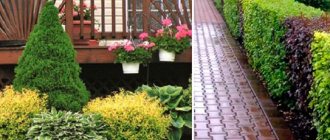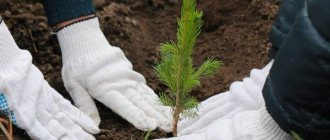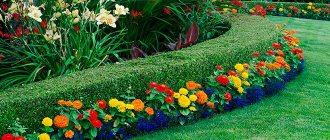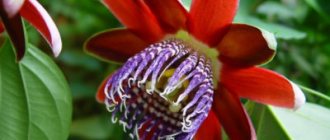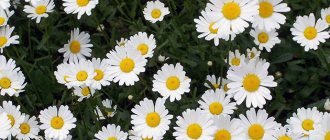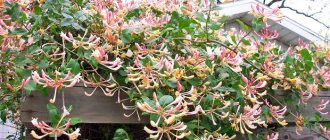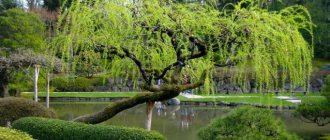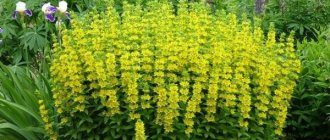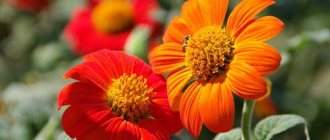What is this flower
Lobelia is one of the most popular types of flowers for the garden or cottage.
Lobelia is one of the popular plants among gardeners. It attracts attention with its delicate flowers, which grow in dense groups, and the ampelous forms hang beautifully from the flower pots, reminiscent of a waterfall. This plant is a perennial shrub of the Bellflower family, which in our country is grown, in most cases, as an annual. The flower's homeland is South Africa, where the flower grows on wet and rocky cliffs, although it can be found almost all over the world in tropical and temperate climates. In total, there are about 300 species of lobelia, of which only 20 are cultivated.
Lobelia: types and varieties for open ground
Description of the plant:
- family Campanulaceae;
- in nature - perennials and annuals, there are subshrubs and shrubs;
- number of species – about three hundred;
- in regions with a temperate climate, the plant is grown as an annual: lobelia does not tolerate wintering well in the ground;
- canopy and ground cover varieties are grown in gardens;
- certain species are used for the production of medical raw materials: the plant contains the alkaloid lobeline, which stimulates the functioning of the respiratory centers;
- the main growth zone in natural conditions is subtropics, rarely – temperate zones;
- About twenty species have been cultivated. Landscape designers often use Lobelia erinus to decorate various areas.
Popular types of lobelia:
- Purple.
- Erinus.
- Dortman.
- Indian tobacco.
The place of lobelia in landscape design
Lobelia is quite often used in landscape design. The flower looks great both on the balcony and in the form of “carpets” near ponds, in alpine slide compositions next to other perennials. In modern design, lobelia is widely used to create coziness in the corners of the garden, for which it is planted in flowerpots or containers. The most common places for planting plants at home are flower beds, borders, and hanging baskets.
In the flowerbed
Before planting a flower on a garden bed or flowerbed, you need to think about what the color scheme of the future composition will be.
Rabatka is a rectangular flower garden in the form of a narrow strip of about 2 m, located along a fence or garden path with other plants.
To combine with lobelia, the flowerbed must be formed from similar shades: blue, lilac, light blue, violet. This combination of colors looks quite attractive: crimson and white, blue and red, yellow and blue.
To combine with lobelia, the flowerbed should be formed from purple, lilac, blue and light blue shades
In hanging baskets
When growing ampelous species, such flowers look most beautiful in hanging baskets in the form of a ball - the plants are a continuous carpet of flowers that hides the frame. One of the easiest options for planting lobelia is coconut liners. Holes are first made in them, filled with soil and plants are planted on the outside of the container.
Ampelous lobelias look great in hanging baskets
In decorative flowerpots
Lobelia looks very attractive in decorative flowerpots, for which you need to choose the right “neighbors”. If you use low-growing flowers in tandem with it, then to diversify the composition you can plant plants with different leaf textures and flower sizes. Large diameter pots are perfect for such plantings. To add dynamism to the flower arrangement, you can combine compact plants with upright growing ones.
An original solution in landscape design would be to use a flowerpot similar to a round vase. In this case, the ampelous lobelia can be planted in the bowl itself, and small bushes of this flower can be planted at the foot, making a light backfill. To add some flair to your garden design, you can install several flowerpots of different sizes with contrasting colors.
To make lobelia in flowerpots look attractive, you need to choose the right “neighbors”
Tower of flowerpots
Lobelia stands out noticeably when grown in a flower tower, that is, pots stacked on top of each other. To form such a composition, take several clay pots with a difference in diameter of about 7 cm. After this, fill the lower container with soil and insert reinforcement, which is buried in the garden soil through a hole in the bottom, thereby ensuring the stability of the flower shelf. The remaining pots are placed on top of each other, putting them on the reinforcement and filling them with soil, followed by compaction. Lobelia is planted in combination with other flowers, starting from the lower pots, after which it is watered abundantly. In such compositions, blue flowers go well with purple and pink petunia, as well as white and red balsam.
As an example, a tower of pots is given, in which the lobelia will stand out noticeably
Lobelia varieties
There are a large number of varieties of lobelia, which differ in the length of the shoots, size and color of the flowers. The most popular of them are hanging and bush ones.
Ampelnaya
Ampelous lobelias (climbing) are plants with thin and long shoots up to 60–70 cm. The flowers and leaves on them are scattered along the entire length of the branch. This species looks great not only in hanging containers, but also on the ground. Long branches spread out to the sides without interfering with other flowers. The ampelous look is great for decorating large flowerpots and flower beds, but for paths this option will not be the best, since you will simply walk over the flowers.
Ampelous lobelias have many varieties, here are some of them:
- fiery lobelia;
- Lobelia Gherardi;
- sessile lobelia;
- blue lobelia;
- Lobelia Dortmann.
Ampelous lobelia has many types and is suitable for decorating large flowerpots, flower beds, paths
Bush
Bush lobelia has spreading and compact bushes with a stem length of up to 30 cm. This species is excellent for decorating ridges, flower beds, paths, flower beds, and borders.
It is recommended to pinch ampelous lobelia, which promotes better branching.
Of the bush lobelias, the most popular variety is the Royal Palace variety. It is characterized by bright red flowers and bronze leaves. Bushes are formed in height up to 12–15 cm.
Cascade
Cascading lobelias are the most lush. Compared to ordinary ones, they are less dense, but longer - 35–40 cm. They can be planted on the ground, but a greater effect can be achieved when placed on a hill, for example, in flowerpots, pots, boxes.
Cascade lobelia has less dense bushes than regular lobelia, but longer branches - 35–40 cm
Annuals
Lobelias are also divided into annual and perennial species. Annual plants include those plants that, after flowering, are not replanted and are not transferred to more comfortable conditions for the winter. Of the annuals, species such as Ezhevidnaya, Thinest and Strong are distinguished.
Hedgehog lobelia is a bush 10–30 cm high. It is also called Erinus, blue or border. The plants have small leaves and flowers with a diameter of 1.5–2 cm. Depending on the variety, the flower may have a purple, white, light blue or dark blue color.
Lobelia Erinus has small leaves and flowers with a diameter of 1.5–2 cm, the color of which can be blue, blue, purple, white
The thinnest lobelia reaches a height of 25–65 cm and has large flowers of lilac or bright blue color. The plant is sensitive to dry weather, since even with slight drying the roots are very difficult to recover, which requires constant monitoring of soil moisture. However, this type of lobelia is resistant to low temperatures and can tolerate frosts down to -1–2˚С.
Lobelia Strong has straight stems and lush foliage. A distinctive feature is long flowering. The shoots reach a height of 40 cm.
Perennial
Of the perennials, we can distinguish Lobelia Beautiful, Purple and Brilliant.
Lobelia the Beautiful is a plant with a shoot height of 65–90 cm. The species is quite frost-resistant and can withstand even the most severe cold.
Lobelia the Beautiful reaches a height of 65–90 cm and is a frost-resistant plant
Lobelia Purple grows well in shallow water and marshy soils, so it is excellent for decorating artificial reservoirs. The inflorescences are shaped like spikelets and reach a height of 90 cm. This species is also frost-resistant.
Lobelia Shiny - grows up to 75 cm and has small flowers of bright red color. The leaves can be red or green, depending on the variety. The plant's winter hardiness is average, so it is better to move the flower to cold, frost-free rooms in the winter.
Caring for lobelia while flowering in the garden
Lobelia is a cold-resistant, light-loving and moisture-loving plant. It grows and develops best in a sunny place with sufficient moisture. It likes loose, nutritious soil, but without excess organic fertilizers. Caring for it is not particularly difficult, but requires compliance with some rules:
- Watering
- Loosening and weeding
- Top dressing
- Trimming
Watering.
The root system of lobelia is not located near the surface, but grows vertically down to a depth of 10-15 cm. Such a root system does not place high demands on watering. Just water the soil to this depth and do not allow it to dry out.
If you grow flowers in pots or boxes, then on hot days the moisture evaporates from them much faster; such plantings need to be watered at least once a day.
Loosening and weeding.
Loosening is a very important operation for maintaining the microclimate of the root system of any plant and lobelia is no exception. It’s not for nothing that this process is called dry watering. The fact is that after watering or rain, a crust forms on the surface of the soil, preventing air from reaching the roots, while at the same time water, penetrating deeper, forms capillaries through which moisture begins to actively flow back out. The result is double harm - there is no air flow and there is moisture release. And if the soil is clayey, then the outflow of moisture may stop, and then rotting of the roots occurs.
Loosening destroys the surface crust and capillaries for moisture release, making the soil looser and more accessible for air flow. Since the roots of lobelia grow vertically downward, it needs to be loosened to a depth of 4-5 cm around the plant. Also remove weeds.
Feeding.
The best fertilizer for lobelia is vermicompost. It contains a lot of macro and microelements, as well as phosphorus and potassium, while at the same time there is little nitrogen. This is the best combination of elements. The amount of vermicompost for the entire season per plant is 150g. Divide this amount into three parts. Apply the first feeding a week after transplanting into open ground, the second before the first wave of flowering, the third after the first wave of flowering and pruning of plants.
Fertilizing with potassium fertilizers, such as potassium sulfate, provokes abundant flowering.
Lobelia looks beautiful, there is a lot of color, but I am not a supporter of such supplements, it’s like doping for athletes. It is better to get a healthy, harmoniously grown plant.
Trimming.
Pruning is a very important operation to obtain a beautiful bush. At the same time, you provoke the awakening of dormant buds, from which shoots begin to grow. The bush begins to thicken, which in turn leads to more flowers.
Pruning can be done several times a season; the plant easily tolerates this operation. At the same time, it is not customary to cut and pinch hanging species, but she also tolerates this easily. It all depends on what you want to get. A pruned bush looks shorter and fuller, an unpruned bush grows longer and has less color.
The height of the plant to which it is pruned depends on the variety. In general, it is customary to prune at a height of 5-10cm, and the main thing is to trim the growth point. I repeat once again, it all depends on what kind of bush you want to get, either shorter or longer. And don't be afraid to prune it a little or a lot, lobelia has no such thing.
The most popular varieties with photos
There are many varieties of lobelia that differ in color: white, blue, purple, lilac, red. Let's look at the most popular of them.
Sapphire - the plant is endowed with lush and hanging stems, reaching a length of 35 cm. The variety blooms with small, blue flowers with white spots on the petals.
Lobelya Sapphire is endowed with lush and drooping stems reaching a length of 35 cm
Emperor Willie is a dwarf variety with a bush height of no more than 10 cm. The flowers are blue. This variety is excellent for border plantings.
Emperor Willy is a dwarf variety with a bush height of no more than 10 cm
Crystal Palace - the variety is distinguished by abundant flowering with many small flowers blooming simultaneously on the bush. The color of the flowers is deep purple.
The peculiarity of lobelia Crystal Palace is abundant flowering with many simultaneously blooming small flowers on the bush
Cambridge Blue - the variety has low-growing and lush bushes with branches up to 10 cm long. The flowers are small in size, pale purple in color with a blue tint.
The Cambridge Blue variety has low-growing and lush bushes with branches up to 10 cm long and pale purple flowers with a blue tint.
Lobelia Riviera is an annual plant that blooms throughout the season and reaches a height of 10 cm. The flowers are bright pink or dark blue. During the period of abundant flowering, the leaves are almost completely hidden by the flowers. The variety is best suited for planting on borders or in boxes on balconies.
Recent Entries
Chainsaw or electric saw - what to choose for the garden? 4 mistakes when growing tomatoes in pots that almost all housewives make Secrets of growing seedlings from the Japanese, who are very sensitive to the soil
Lobelia Riviera blooms throughout the season and reaches a height of 10 cm
Miss Klibran is a wide bush with a flowering area up to 30 cm in diameter. The plant grows up to 15 cm, the flowers are bright purple with a white center.
Lobelia Miss Clibran has a flowering area up to 30 cm in diameter and reaches a height of 15 cm
Blue fountain - the bush is formed from 6-8 stems no more than 30 cm long. The branches resemble a blooming blue fountain. The flowers are characterized by a blue color with a white spot.
Lobelia variety Blue Fountain is formed from 6–8 stems up to 30 cm long, and the branches resemble a blue fountain of flowers
Growing lobelia from seeds
Ampelous verbena flowers - perennial plant
The seeds are very small, so when planting they are mixed with dry sand in a ratio of 1:50.
Note! You can sow them on a thin layer of snow in a container, at the same time the seeds will undergo stratification - slight cooling, then they will sprout faster and more easily.
Lobelia seeds
Sowing is carried out during intense sunny days in February-March. Then the seedlings will not stretch due to lack of light. They do not need to be covered with soil; it is enough to maintain soil moisture by occasionally ventilating the container.
Note! To preserve moisture, the container is covered with glass or plastic film. Watering is done from a spray bottle.
After a couple of weeks, the seedlings germinate. The ventilation time is gradually increased, and then the coating is completely removed. When the seedlings grow their first true leaves and the shoots reach 3-4 cm in height, they are plucked. Upon reaching a height of 6-7 cm, it is recommended to pinch the plants to increase their branching.
Planting seedlings
You can start planting lobelia in a permanent place of growth only after the frosts have passed and the soil has warmed up well (late May). Depending on the variety, plants are transplanted into open ground or into suitable containers (containers, flower pots). In order for the root system of the flower to develop normally, the diameter of the container must be at least 20 cm.
To plant lobelia seedlings, it is necessary to use containers with a diameter of at least 20 cm so that the root system develops normally
The land for subsequent cultivation of lobelia must meet the same requirements as for seedlings. Too fertile soils should be avoided, as plants will actively grow green mass to the detriment of flowering. This also suggests that too frequent fertilizing is not necessary, especially with nitrogen content. After preparing the soil and selecting a container, lobelia seedlings are planted in the following order:
- Several small holes are made in the container.
- Drainage made of expanded clay or small crushed stone is laid at the bottom in a layer of 5 cm.
- Fill the container with soil and make a hole in the center in accordance with the size of the seedlings' soil ball.
- By transshipment, seedlings are transplanted from cups into pots. To make the bush as lush as possible, several plants are planted in each container.
- Then the root system is sprinkled with soil, watered, a little soil is added and lightly compacted with hands.
Video: planting flowers in pots
For better survival of plants, the pot must be placed in a place protected from the sun and wind for several days. After this, the container is hung in such a way that the plants receive as much sunlight as possible during the day. To make care more convenient, the pot should not be placed too high.
Lobelias in hanging containers should be placed at such a height that they are easy to care for
If the flower is planted in open ground, then a sunny area will be the best option, although lobelia will develop and bloom well in places where the sun shines for only a few hours a day. In this case, seedlings are planted depending on the goals pursued:
- to form a continuous carpet, plants are placed at a distance of 10–15 cm from each other;
- to obtain individual bushes - at intervals of 25 cm.
Seedlings are also planted in open ground using the transshipment method.
Sowing seeds for seedlings
It is better to start sowing seeds from the end of February, or at any time during March. True, some gardeners practice sowing flowers in December-January. But if there is no possibility of additional illumination, it is advisable not to rush into sowing lobelia seedlings: seedlings in this case develop slowly, and if there is a lack of light, they stretch upward. A flower planted in March and grown only in natural light is more viable and compact, and is less likely to be affected by the “black leg” disease.
Proper cultivation and care of seedlings will contribute to their abundant flowering
The seeds are small, dusty - for uniformity of planting they are often mixed with sand. Seeds are planted in purchased soil for seedlings or in a soil mixture prepared in the fall, consisting of turf garden soil, compost (humus), peat and river sand. To normalize the acidity of the soil substrate, you can add dolomite flour or lime.
You can purchase granulated seeds, which are convenient to plant in peat tablets and cassettes - this way you will get rid of the labor-intensive picking stage.
The sequence of planting a flower for seedlings:
- The container for planting is filled with soil substrate, which is lightly compacted, watered and kept for 24 hours. Lobelia seedlings feel best in a wide and shallow tray equipped with drainage holes. A fungicide can be added to the water for initial watering of the soil for seedlings.
- The seeds are placed on a sheet of paper bent at a corner and, lightly tapping it, poured onto the prepared soil, distributing them evenly.
- After sowing, the seeds should never be sprinkled with soil, but rather sprinkled with a very weak solution of potassium permanganate from a spray bottle.
- The container with seedlings is covered with glass and placed in a warm place.
The soil substrate for sowing seedlings can be prepared from a mixture of garden soil and vermiculite. Vermiculite increases the porosity and looseness of the soil and normalizes its moisture. It also protects the root system of plants from environmental temperature changes and neutralizes soils with high acidity.
Care
Lobelia after planting seedlings, although undemanding in care, still requires some effort for lush flowering. The basic rules of care are as follows:
- good lighting without direct sunlight;
- watering should be plentiful, but stagnation of water near the roots should be avoided;
- when fertilizing, you need to exclude nitrogen fertilizers;
- in the second half of summer, dense pruning is carried out to stimulate the second wave of flowering.
Watering and fertilizing
Lobelia, like any other plant, needs watering, especially in hot weather. If you have hanging varieties growing in your garden, they need to be watered twice a week. If plants experience a lack of moisture for a long time, the leaves will begin to turn yellow and dry out in the sun. As a result, the flower may die completely. However, this does not mean that it should stand in water - watering should be moderate and timely. As for fertilizing, they are carried out once every 2 weeks, using complex fertilizers for flowering plants and preferably in liquid form.
One of the important conditions for the normal growth of lobelia is moist soil.
Trimming
During the entire growing season, lobelia is pruned several times. However, this procedure is most important after the first flowering, which ends in mid-summer. Trim the plant so that only 5 cm of stems remain above the ground. As a result, 2 weeks after this procedure, a second wave of flowering begins, which in most cases is more violent than the first. Plus, with the help of pruning, the aesthetic issue is resolved by removing faded stems.
